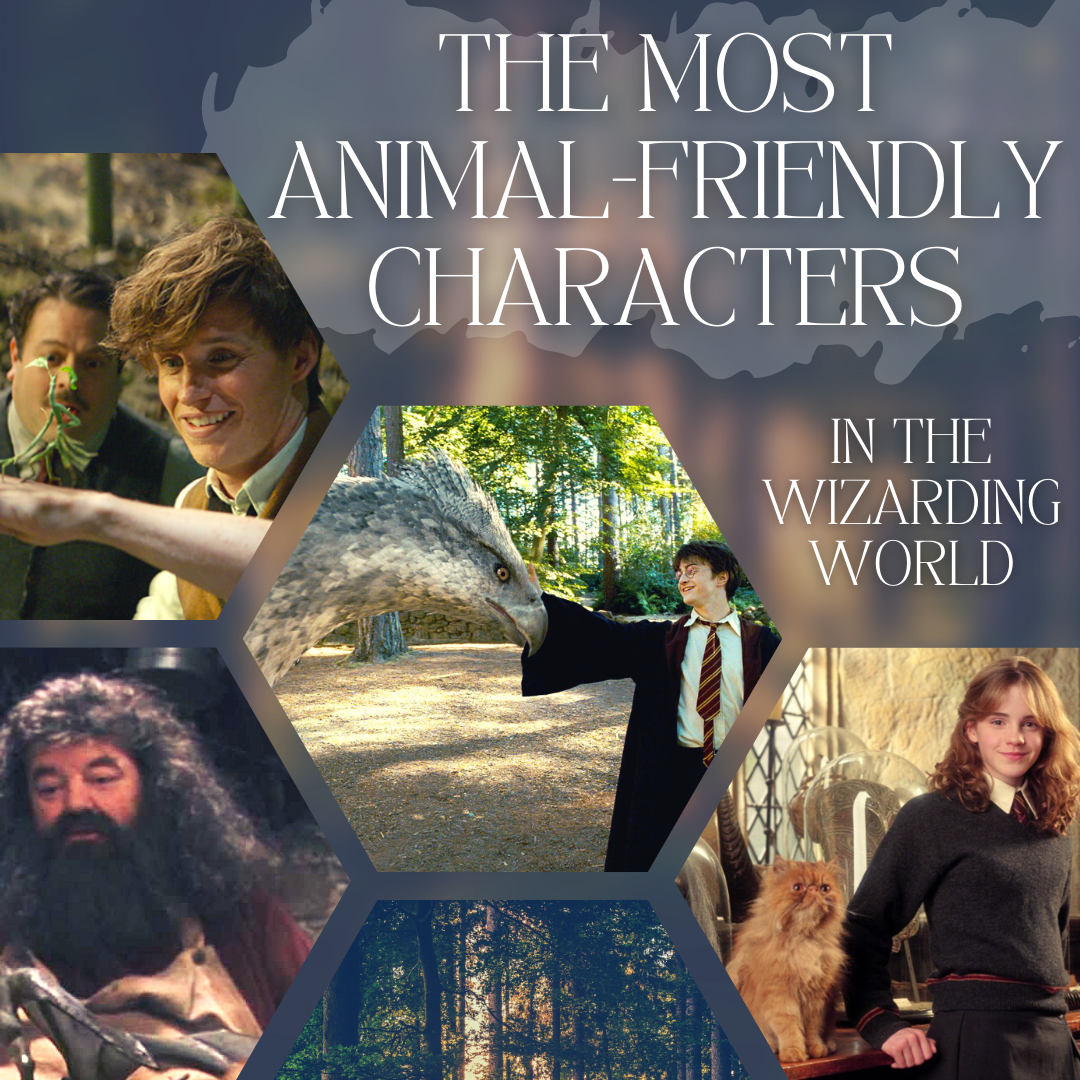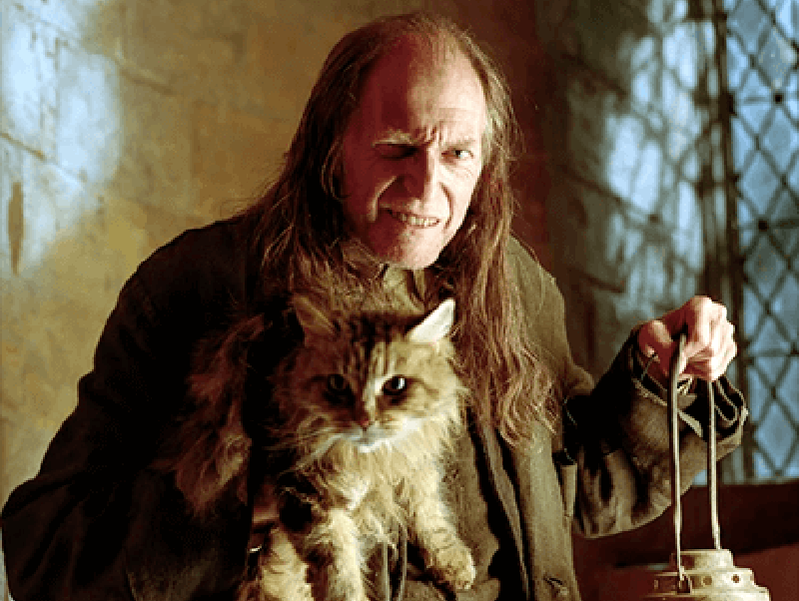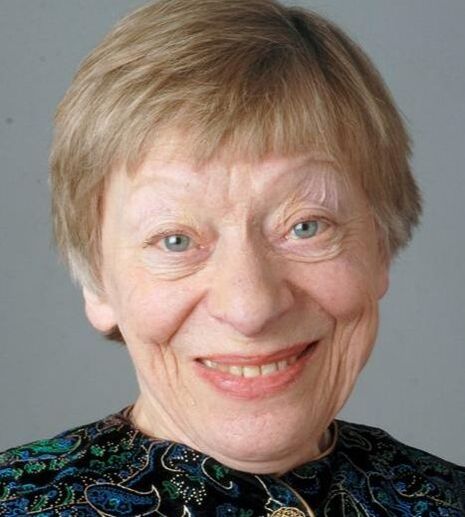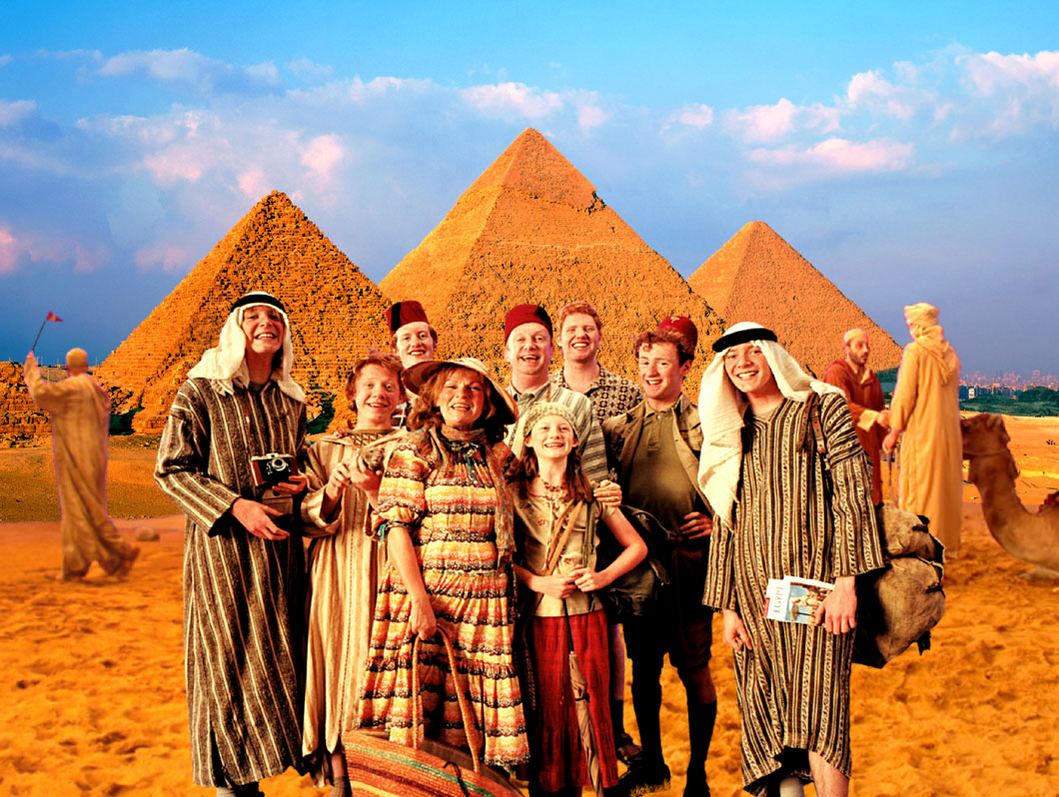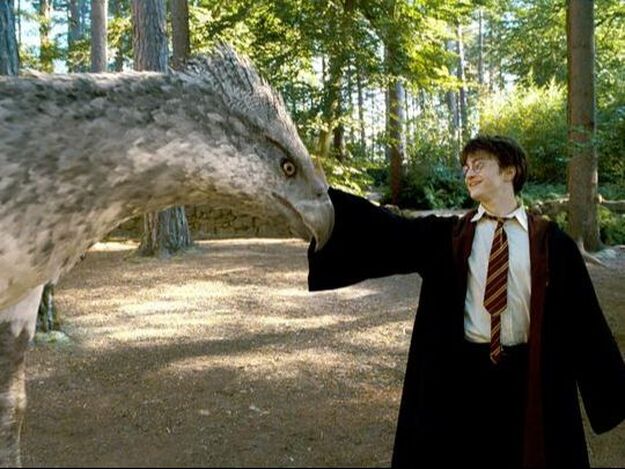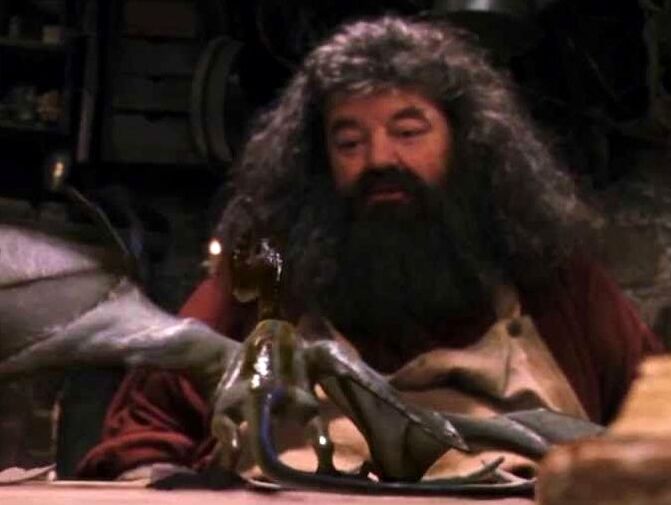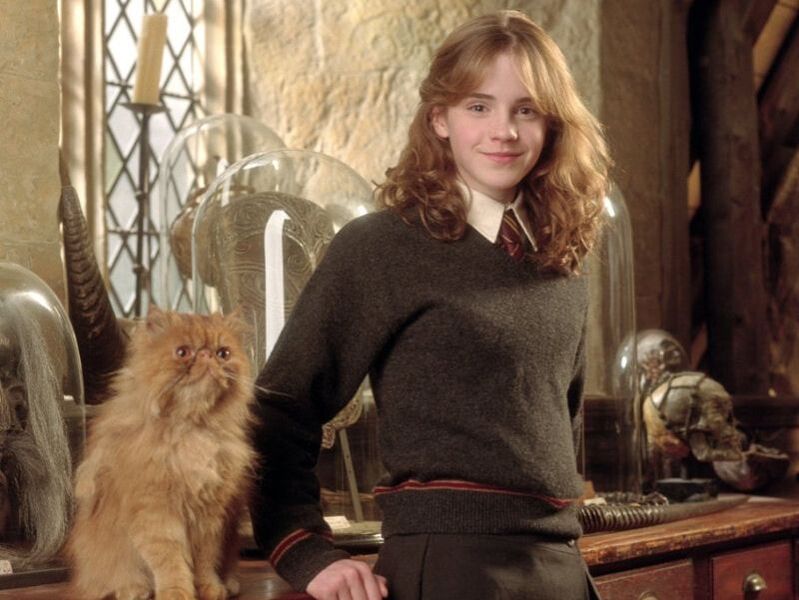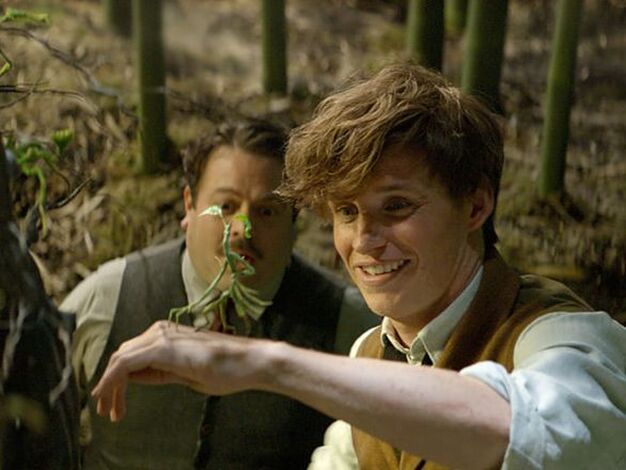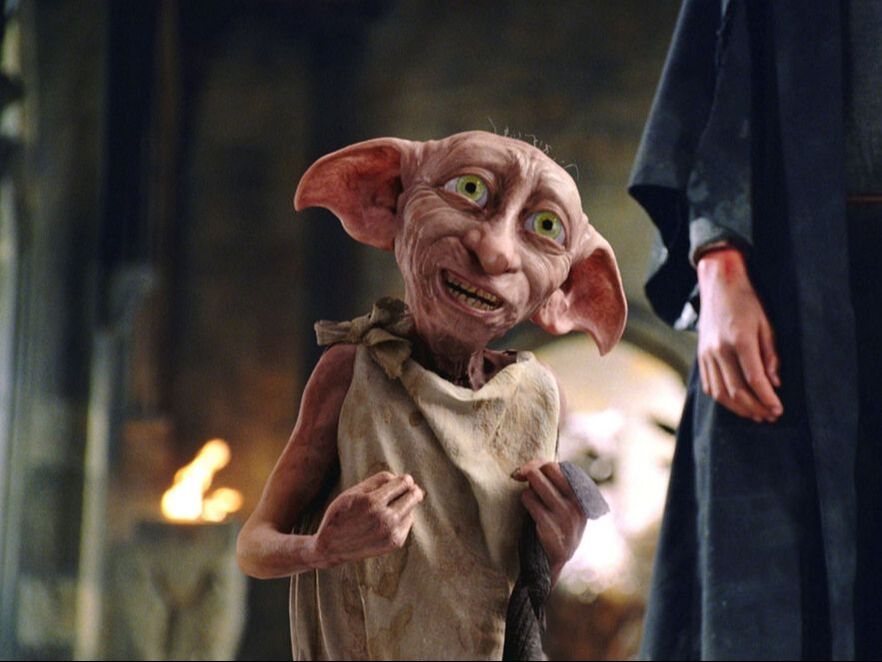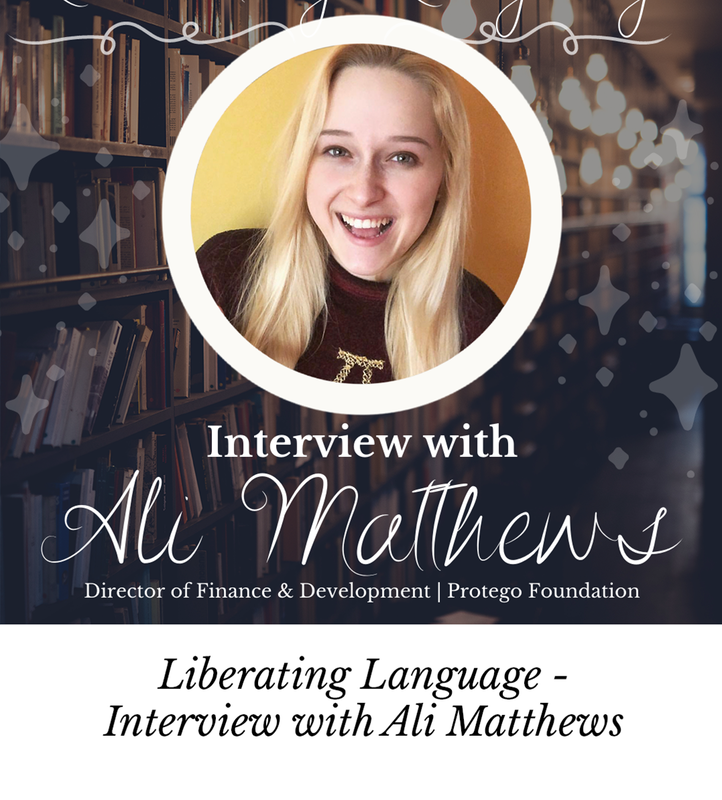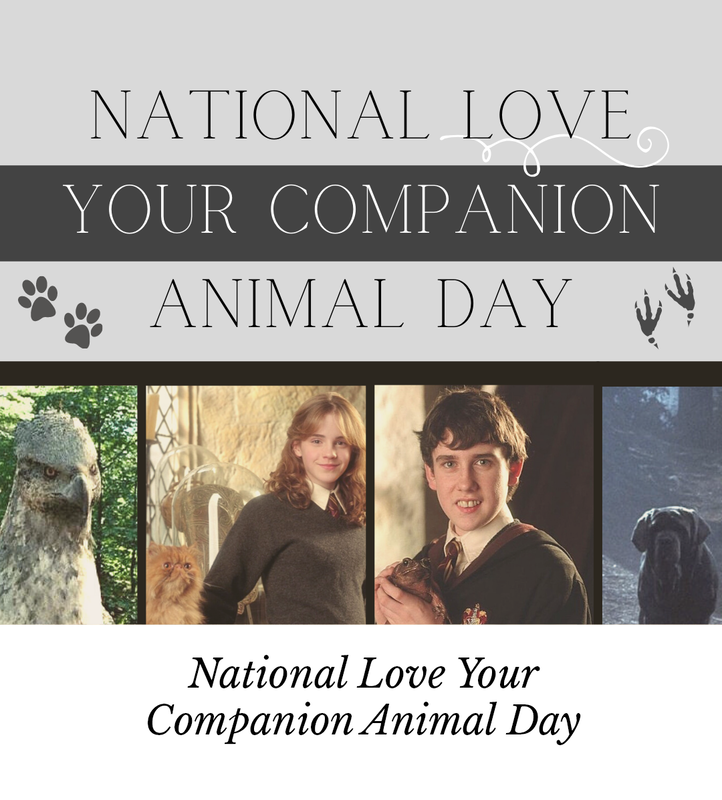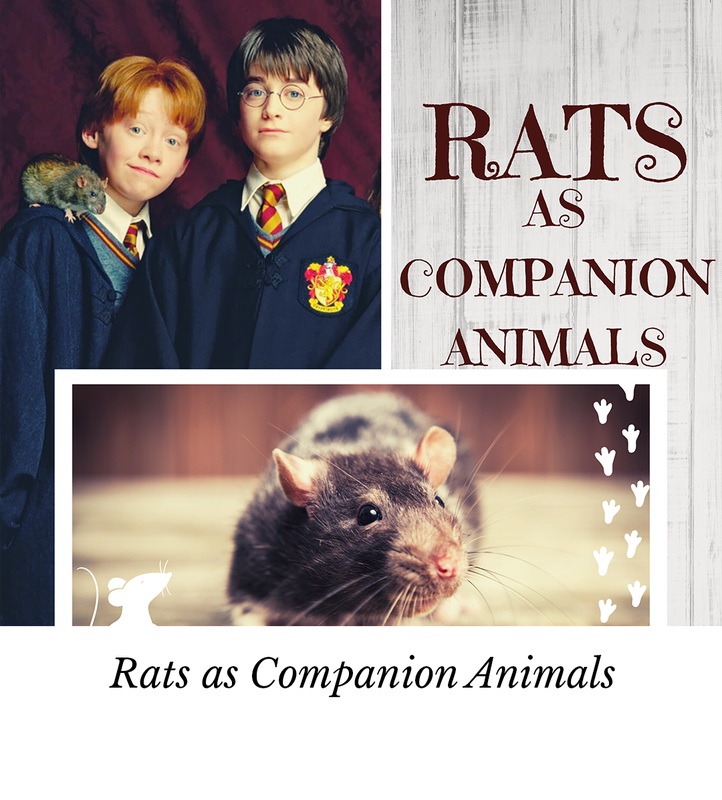Before beginning, we must address the obvious Erumpent in the room: Cognitive Dissonance (for full details, see ProtegoCast’s published works!) There is no doubt that many characters in the series, namely Hagrid, demonstrate clear passion and compassion for Magical Creatures, while still engaging with behaviors that contradict this, eg: the consumption of meat, wearing skin / hide / fur clothing, and treating animals as commodities. On that note, alongside spotlighting their “animal-friendly” actions, each entry will also acknowledge any “Red Sparks” (red flags). However, as is true of activism and animal rights in the Muggle world, we cannot let the perfect be the enemy of good. Our primary focus is to shine a light on positive actions; they show that there is a strong foundation upon which we can build. So without further ado, let the list begin!
Red Sparks: Along with many of his peers, Harry is on the record as a meat-eater and also shows no issue with the use of animals in clothes and potion-making. He also occasionally shows disrespect to his companion animal, Hedwig, admonishing her when she is late and putting unrealistic demands on her to work.
Red Sparks: A whole episode of ProtegoCast was devoted to Hagrid and cognitive dissonance. Even with as much passion and compassion that he has for magical creatures, his actions don’t always align. This includes his consumption of meat, medicinal use of dragon flesh, experimental breeding of Blast-Ended Skrewts, and dismissal of S.P.E.W. He also had quite an anthropocentric view of non-human creatures, which was more focused on welfare and paternalism than rights and freedom.
Red Sparks: Hermione’s approach to S.P.E.W. is quite anthropocentric, as she seeks to impose her world view onto the elves without their consent. Plus, she will regularly finish a statement about elfish welfare by helping herself to a meat dish in the Great Hall. Additionally, in Order of The Phoenix, she makes a derogatory comment about Centaurs, claiming that she “never liked horses,” thereby reducing Firenze to his physical appearance.
Red Sparks: In Deathly Hallows, Xenophilius claims that Luna is out fishing for freshwater plimpies to make soup, suggesting that she does eat animals. She also takes no issue with Thestrals drawing the school carriages or being ridden, and in Order of the Phoenix, she speaks about trying to “catch” a Crumple-Horned Snorkack in Sweden.
Red Sparks: Newt is seen using animal byproducts - such as Swooping Evil venom - for the benefit of humans.
Red Sparks: Not many, as far as our mad-eye can spy! There is a small question mark over the material Dobby uses to make his socks - he describes buying “wool” with his wages; however, with the ever-growing range of animal-free yarn on the market, there is a high possibility that his socks are acrylic, viscose, or even cotton! In a “knutshell,” when it comes to animal-friendly characters, there is no one quite like Dobby! Let us know if you agree with the characters we selected for this list! Is there anyone else you would add? Written by Sophie Harrison Accio More Articles:
0 Comments
Your comment will be posted after it is approved.
Leave a Reply. |
The Protego Foundation's work is made possible, in part, thanks to Tylor Starr.
The Protego Foundation and its activities are not licensed by, sponsored by or associated with Warner Bros., J.K. Rowling, or their affiliates. 'Wizarding World,' 'Harry Potter,' ‘Fantastic Beasts' and all related names, characters and indicia are trademarks of and © Warner Bros. - Harry Potter publishing rights © J.K. Rowling.
FEIN 83-3531129
The Protego Foundation and its activities are not licensed by, sponsored by or associated with Warner Bros., J.K. Rowling, or their affiliates. 'Wizarding World,' 'Harry Potter,' ‘Fantastic Beasts' and all related names, characters and indicia are trademarks of and © Warner Bros. - Harry Potter publishing rights © J.K. Rowling.
FEIN 83-3531129

